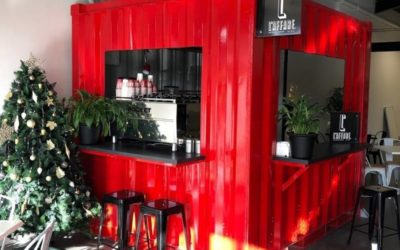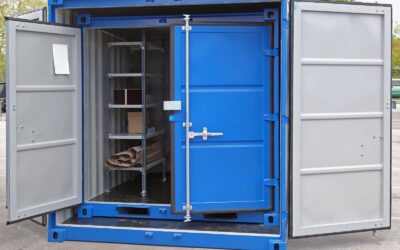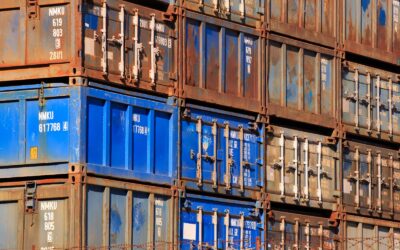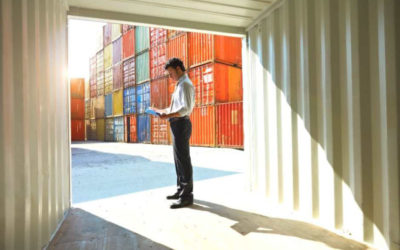Shipping containers, initially designed for the simple task of transport, have evolved into versatile structures used for a myriad of purposes worldwide. From pop-up cafes to innovative homes, their uses are virtually limitless. However, to maximise their functionality and efficiency, certain accessories are indispensable. This blog post aims to highlight five essential shipping container accessories that can transform these steel boxes into fully equipped, purpose-oriented spaces.
Shipping containers come in all shapes and sizes from your standard 20ft shipping containers and 40ft shipping containers to open side containers, open top containers and more. As well as all these, there are also a lot of shipping container accessories that you can add to them if you choose.
When exploring the versatility of shipping containers, the role of shipping container accessories becomes paramount. Let’s delve into five essential accessories that can transform your shipping container and increase its functionality.
1. Vents and whirlybirds
Ventilation is a critical accessory for any shipping container, helping manage temperature fluctuations and prevent condensation build-up that could lead to corrosion or mould.
Standard vents provide adequate airflow for basic storage purposes. However, if you’re transforming the container into a living or working space, you might want to consider installing whirlybirds.
Whirlybirds, or wind turbines, offer superior ventilation by circulating air more efficiently. They utilise wind power to draw hot, stale air out and draw fresh air in, thereby maintaining a comfortable, healthy environment inside the container.
Whether you’re using your shipping container for storage, a pop-up café, or a home office, vents and whirlybirds are essential for creating a comfortable and safe atmosphere.
2. Shelving and benches
In order to optimise space and organise goods effectively within a shipping container, installing shelving and benches is crucial.
Shelving systems can be easily fitted into the container walls, providing ample storage for items of varying sizes. This can prove especially beneficial for shipping containers used as pop-up shops or storage facilities.
On the other hand, sturdy benches can be a valuable addition if the container is repurposed as a workshop or a café. Not only do they offer a place to work or dine, but they can also provide additional storage space underneath.
Remember to choose materials for your shelves and benches that withstand the container’s conditions; corrosion-resistant metals or treated woods are often good choices. Just like vents and whirlybirds, shelving and benches play a crucial role in maximising the functionality and efficiency of your shipping container.
View this post on Instagram
3. Lockboxes
While the inherent strength and durability of shipping containers offer a degree of security, additional measures such as installing lockboxes can considerably enhance the safety of your valuable goods.
A lockbox is a steel box welded on to the door of the shipping container, designed to enclose a padlock and thereby shield it from tampering, cutting, or sawing. This simple yet robust solution significantly increases the container’s security, making it a prudent choice for containers used for storage or converted into pop-up shops.
Equally important is to ensure your lockbox is made from corrosion-resistant material and is robust enough to withstand harsh weather conditions, further safeguarding your container from potential break-ins. With a lockbox installed, you can have greater peace of mind knowing that your shipping container and its contents are well-protected.
4. Doors and windows
Incorporating doors and windows into your shipping container can transform it into a more functional and liveable space. Doors offer easy and secure access, while windows bring in natural light and ventilation, vital for creating a comfortable environment.
When choosing doors, consider the container’s intended use – a roller door might be ideal for a workshop or storage space, while a glass sliding door could enhance an office or living area.
Similarly, the size and type of windows can be tailored to your needs. High-quality, double-glazed windows not only let in light but also provide insulation, making your container more energy efficient.
Moreover, just like the lockboxes, sturdy, weather-resistant materials should be used for doors and windows to ensure longevity and security. Remember to consider the placement of these features too, as this can greatly impact the overall functionality and aesthetic of your shipping container conversion.
5. Electricity and plumbing
When converting a shipping container into a functional space, incorporating electricity and plumbing is crucial to providing essential amenities that ensure comfort and convenience.
The electrical setup might involve installing lights, sockets, and possibly heating and air conditioning systems, depending on the intended use of the container. This setup must comply with local electrical codes and regulations, keeping safety as the paramount concern.
In terms of plumbing, the complexity will vary based on requirements; a simple setup may just need a sink and a toilet, while a more elaborate arrangement could include a shower, washing machine, or even a dishwasher. Like with electrics, compliance with local plumbing codes is crucial to ensure safety and functionality.
Both electrical and plumbing jobs should be handled by licensed professionals to maintain high standards of quality and safety. As these installations often require significant alterations to the container structure, careful planning and consideration should be given to the placement of these features to minimise disruption to the overall design. Remember, an efficiently planned and expertly executed electrical and plumbing setup can dramatically enhance the comfort and usability of your converted shipping container.
Some fantastic container accessories to consider!
In summary, transforming a shipping container into a functional, comfortable space requires careful consideration and implementation of key features. These include insulation, doors and windows, skylights, electricity, and plumbing. Each of these elements plays a critical role in maximising the comfort, functionality and aesthetics of your conversion. Insulation helps maintain a consistent internal temperature, while doors, windows, and skylights optimise natural light and ventilation. Meanwhile, expertly installed electrical and plumbing systems provide essential amenities, improving convenience and usability.
Remember, careful planning and compliance with local codes and regulations are paramount in ensuring the safety, quality, and success of your shipping container conversion project.
If you are looking to accessorise your shipping container, get in touch with the NZBOX team today and we can talk you through your options.









